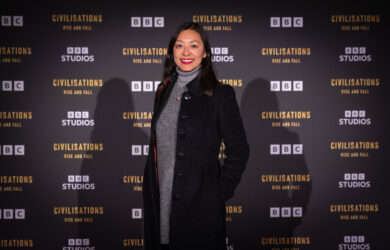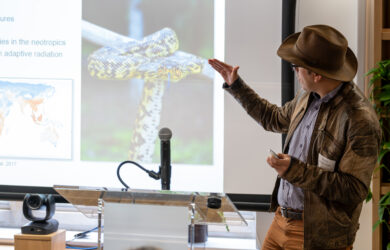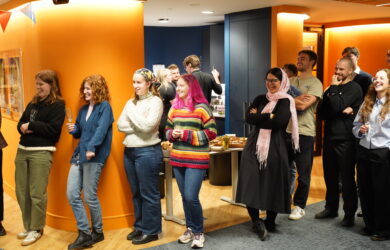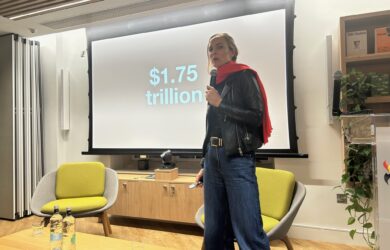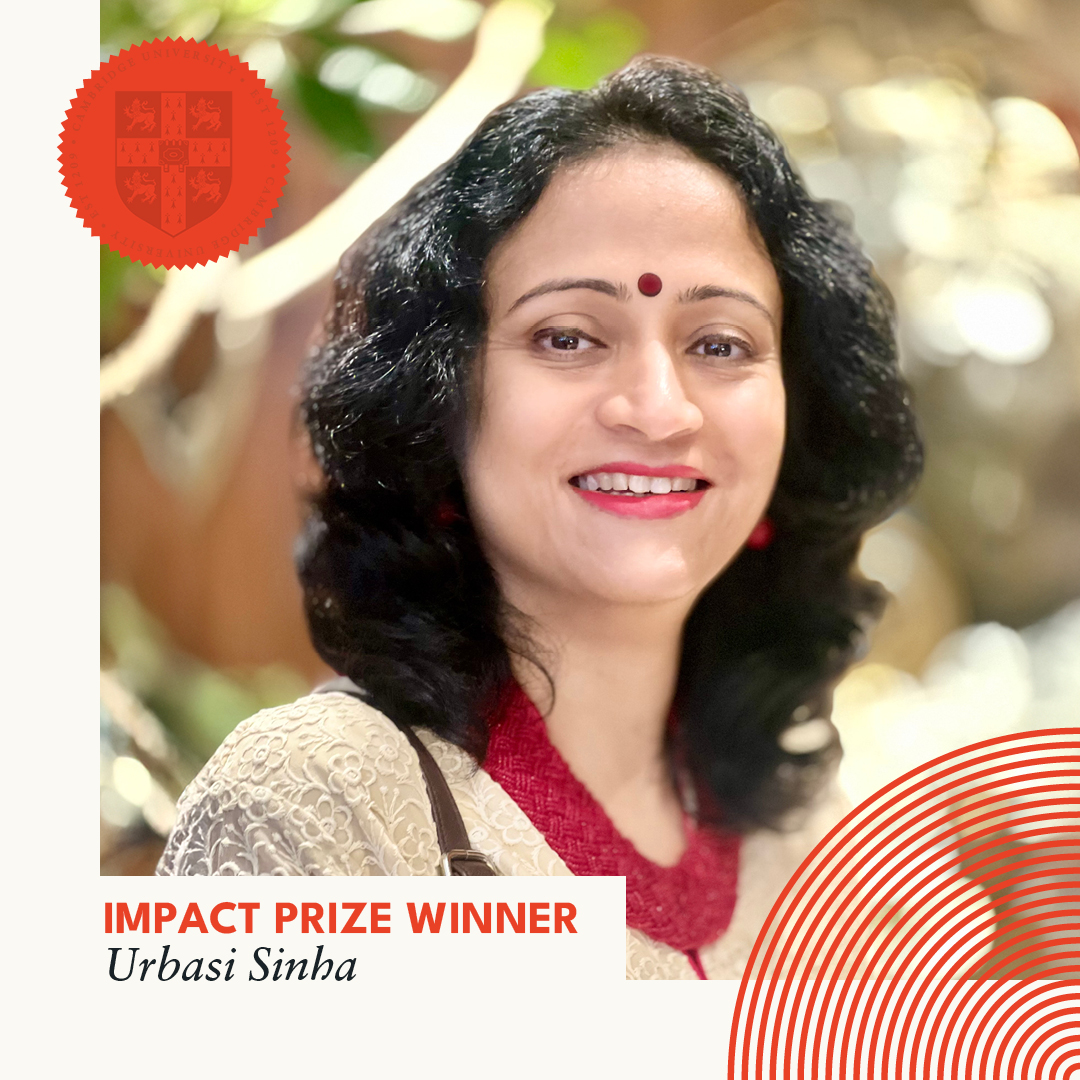
Impact Prize winner Professor Urbasi Sinha talks about her groundbreaking work in quantum science, policymaking and enterprise.
Quantum science has sometimes struggled to show its potential for impact so I am delighted the jury has understood the benefits it can bring for societal growth.
Professor Urbasi Sinha
Professor Urbasi Sinha [2002] has had a transformative impact on quantum technologies in three areas: fundamental quantum science, policymaking and practical applications. In the process she has significantly contributed to a shift in how policymakers regard quantum technologies, from it being perceived mostly as a risk to it being viewed as an opportunity to tackle our most pressing global challenges, including public health, climate change and food security. Quantum computing, for instance, is being used to study materials that absorb carbon in a number of different ways.
Professor Sinha’s lab in India has been able to generate consistently significant results in quantum science and technologies while delivering several global as well as national firsts. She has also won multiple awards and accolades, including the Chandrasekarendra Saraswathi National Eminence Award in 2023 and the Rashtriya Vigyan Puraskar: Yuva Shanti Swarup Bhatnagar Award 2024 for Physics, the highest science prize from the Indian government in this category. She was also named one of Asia’s Top 100 Scientists in 2018.
In 2023, she was awarded the Canada Excellence Research Chair in Photonic Quantum Science and Technologies which now enables her to grow her science simultaneously in India and Canada, and through her continuous support for educational training programmes targeting low and middle income countries, such as the Open Quantum Institute’s quantum for all hackathons, she has been an outstanding ambassador for the field.
Now she is moving into the entrepreneurial field, having co-founded a start-up to produce practical applications based on quantum research, for instance, in relation to more precise medical imaging. Quantum algorithms in ECG imaging, for instance, allow for the detection of subtle patterns and anomalies that might be missed by conventional methods, potentially leading to earlier and more precise diagnosis of cardiac conditions.
Her nomination for the Gates Cambridge Impact Prize said: “Professor Sinha’s vision and dedication are paving the way for a future where quantum computing serves as a catalyst for solving humanity’s most pressing issues, embodying the true spirit of science in service of global progress.”
Cambridge and beyond
Professor Sinha became interested in quantum physics at Cambridge where she was one of the first PhD students to work at Cambridge’s Nanoscience Centre. She had done a Physics degree in India and had come to Cambridge to do parts two and three of the Natural Science tripos. In Part two she did a two-week experimental project which introduced her to the Josephson effect, which is a phenomenon that occurs when two superconductors are placed in proximity, with some barrier or restriction between them. This thin, non-superconducting layer which means that electrons can tunnel through the barrier is known as the Josephson junction.
Professor Sinha had to create her own junction in order to carry out the experiment. She went on to do another experiment in particle physics at a later date which had a much lower level of precision. It underlined for her how precise quantum science is. In Part three of the tripos she did a major project on the Josephson effect involving signals from the human brain. “It made me fall in love with precision experiments,” she says, “and in how I could harness the power of quantum phenomena.” She ended up getting two master’s degrees, supported by a Nehru-Chevening
scholarship, and applied to do her PhD for which she was awarded a Gates Cambridge scholarship in 2002. The year before she had married her husband, Aninda Sinha, who was in the first Gates Cambridge cohort.
After finishing her PhD on experimental and theoretical studies of the Josephson effect in high-temperature superconductivity, Professor Sinha did a one-year post doc at the Cavendish laboratory on a paper-industry-funded project – to make paper thinner and whiter – before moving to Canada in 2007 to work in the new field of quantum optics using single and entangled photons at the Institute for Quantum Computing at the University of Waterloo.
In 2010 she went on maternity leave and returned to finish her research in Canada before moving back to India in 2012 to the Raman Research Institute in Bengaluru where she set up her laboratory. Her husband, who had returned to India earlier, joined her in Canada while she finished her research.
Hers was the first laboratory in India to work on quantum experiments using photons. “It was a very new field,” says Professor Sinha. “People were still warming up to the idea of quantum information. Many didn’t believe the revolutions we have had in the last decade, such as quantum technology having practical applications, would happen so quickly. There has been a big sea change in mindset in that time. Since 2017, India has been very proactive in the quantum domain.”
Policy work
Professor Sinha has been a significant part of that progress. In 2023, the Indian government set up the National Quantum Mission, of which she has been a leading champion. It promotes quantum research and development, with the goal of making India a leader in quantum technology.
She has also been instrumental in the creation and launch of the Open Quantum Institute (OQI), a ground-breaking multi-stakeholder institution unveiled at CERN in March 2024. She provides scientific guidance as an advisory board member, civil society engagement and high-level political advocacy for the project’s aims and has recently been named an OQI ambassador representing India’s National Quantum Mission at the OQI. The institute aims to accelerate quantum computing applications for the Sustainable Development Goals and foster collaboration between researchers, entrepreneurs, the UN and NGOs; ensure global, equitable access to quantum resources; develop international quantum education initiatives; and establish a neutral forum for quantum diplomacy.
 Professor Urbasi says: “When I first started working on quantum communication, there were a lot of questions about the line between science and science fiction. A lot of results have proven the validity of quantum research and several new laboratories have been set up that show this is something to be taken seriously. We now have an excellent ecosystem which will help India achieve its goal of becoming a developed nation by 2047. Rich nations can afford to spend their resources on niche technology. We have chosen to do so and have a very thought-through strategy. We have invested what we can in technology so that we are able to play a leading role in future technologies in the next decades.”
Professor Urbasi says: “When I first started working on quantum communication, there were a lot of questions about the line between science and science fiction. A lot of results have proven the validity of quantum research and several new laboratories have been set up that show this is something to be taken seriously. We now have an excellent ecosystem which will help India achieve its goal of becoming a developed nation by 2047. Rich nations can afford to spend their resources on niche technology. We have chosen to do so and have a very thought-through strategy. We have invested what we can in technology so that we are able to play a leading role in future technologies in the next decades.”
Fundamental science
All of this work is built on Professor Sinha’s outstanding impact in fundamental quantum science. She has a long list of scientific achievements, including many firsts, such as her experiments in quantum communications on the Born rule [a postulate of quantum mechanics that gives the probability that a measurement of a quantum system will yield a given result] and the superposition principle [the principle that a quantum system can simultaneously exist in multiple states, with each possible state contributing to the overall quantum state according to complex probability amplitudes, until measurement causes it to collapse into a single definite state]. Both are cornerstones of quantum mechanics. Professor Sinha has used these principles to test the underlying quantumness of quantum computers and achieved the first loophole-free experiment showing that the Leggett-Garg Inequalities [LGIs] have been decisively violated using single photons. The violation of the LGIs means that the time evolution of a system cannot be understood only classically.
The loophole-free experiment was published in 2022 and has been recognised as the “most watertight” experiment in this area by leading experts in the field. The research results are important for issues such as data security.
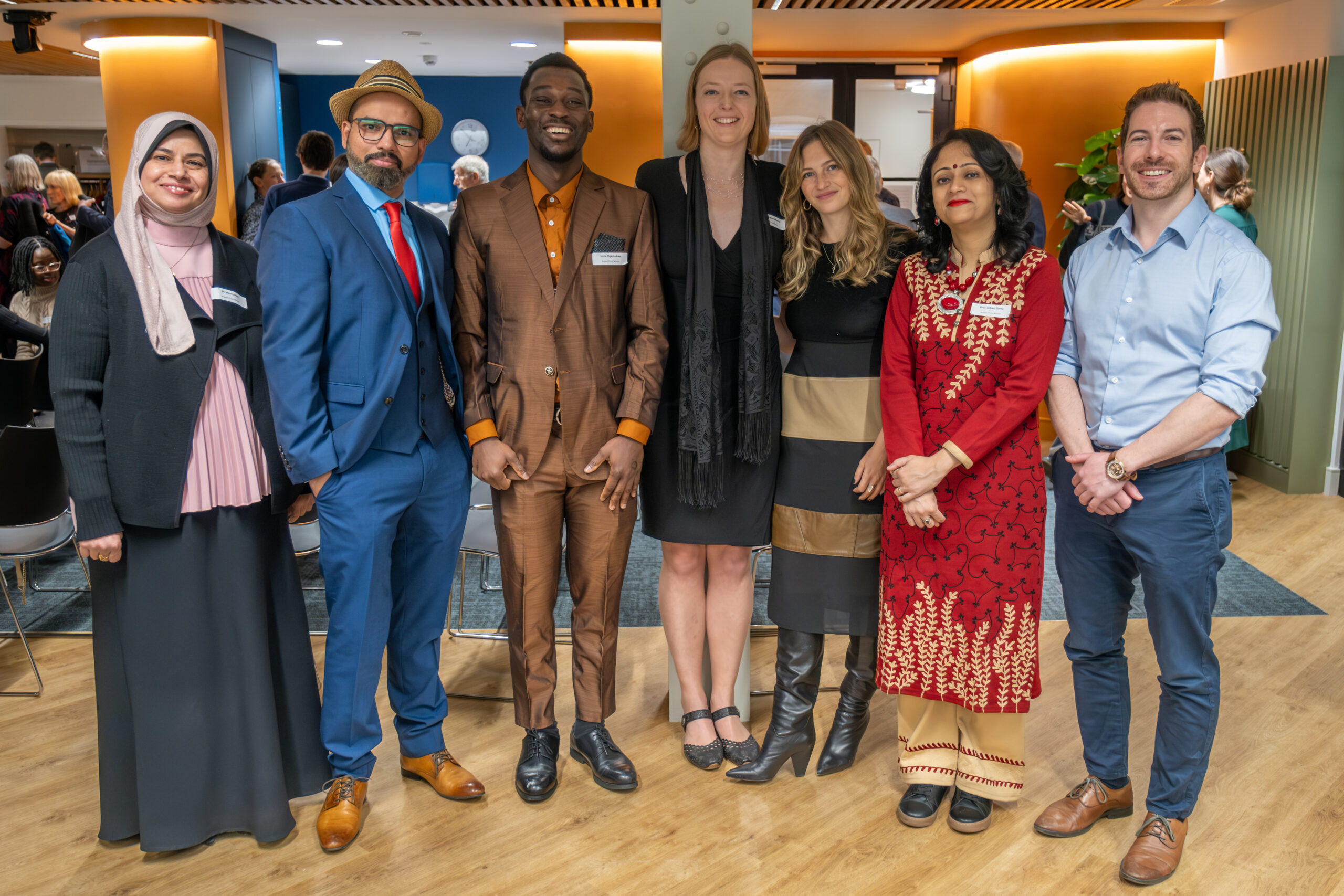 In the area of quantum computation, Professor Sinha has devised a novel, robust and scalable experimental scheme for encoding information in highly entangled spatial-bin photonic qudits [quantum digits that can take on more than two states simultaneously] as well as a novel measure for higher dimensional entanglement which she was invited to write about in Scientific American.
In the area of quantum computation, Professor Sinha has devised a novel, robust and scalable experimental scheme for encoding information in highly entangled spatial-bin photonic qudits [quantum digits that can take on more than two states simultaneously] as well as a novel measure for higher dimensional entanglement which she was invited to write about in Scientific American.
Other work has been influential in quantum optics, shedding new light on the Hong-Ou-Mandel (HOM) effect which has myriad applications ranging from optical quantum computing gates to quantum metrology.
Professor Sinha has also led work with experts in Canada in the field of intercontinental satellite-based secure quantum communications and experts in the UK, Poland and Italy have shown interest in collaborating with her lab in this domain, making her project part of a global drive for secure quantum communication networks and, potentially, a quantum internet, a network of quantum computers that could some day send, compute and receive information encoded in quantum states.
Her work both on understanding and improving the fundamentals of quantum science and on devices for photonic structures, as well as her science diplomacy role, her work on the SDGs and her new start-up, which aims to build products in the health and cybersecurity fields, such as quantum-enhanced medical imaging, show the impact she is having across a broad range of areas.
As a woman in a male-dominated field – and one from a developing nation – she is also a vital role model and has been active in promoting women in optics and photonics and, more widely, in promoting women in science at schools and science fairs.
Impact Prize
Professor Sinha is one of eight Gates Cambridge Scholars to win the Impact Prize, which celebrates the scholarship’s 25th anniversary. She says: “I have seen how the scholarship has evolved over the 25 years and am thrilled to celebrate its anniversary and to be recognised for my work over a similar time span. It is very humbling, but also makes me believe in the impact I can have in the next 25 years.
“Sometimes in science a lot of your experiments don’t work, but this prize says that what I am doing is important and gives me a new injection of motivation. Quantum science has sometimes struggled to show its potential for impact so I am delighted the jury has understood the benefits it can bring for societal growth.”








